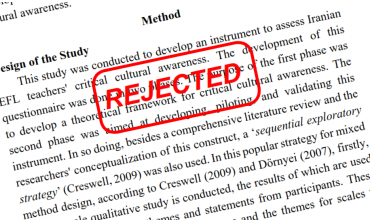Design of a research study is the procedures a researcher go through for answering the research questions. It includes two phases: the collecting data method and analyzing it.
Design of a research study depends on the variables and the type of the study or research as it was mentioned in “chapter 3”. The type of research can be qualitative, quantitative, or a mixture of both. So in order to choose an appropriate design of a research study, you need to find out the type of your research.
Different types of research studies
The three different types of research studies were discussed in “qualitative research vs. quantitative research”. In short,
Qualitative research studies immeasurable phenomena. Their function is to develop ideas.
Quantitative researches
The mixed method, as the name suggests, is a mixture of qualitative and quantitative research. These kinds of studies apply both numerical and non-numerical instruments. For example, a study using a questionnaire as a
So in order to choose an appropriate design of a research study, the first thing you need to do is to recognize the type of your study.
Types of research design
Quantitative studies
Major types of research design regarding quantitative studies are experiments and non-experiments each includes some minor types and follows a standard format.
– Data collection procedure
In quantitative designs, the researcher chooses a sample and studies them. The results will be generalized to all the population. There are numerous ways of sampling like random sampling, stratified sampling, systematic sampling, etc.
– The instruments
Then the data related to each variable will be collected through the appropriate instrument. The instruments used for a survey are questionnaires. Sometimes there are readymade questionnaires and sometimes the researcher develops one.
– Data analysis
After the data gathered, it is time to analyze the data. Sort the data in tables and find the mean, standard deviation, the shape of
Qualitative studies
– Data collection procedure
A most specific characteristic of qualitative studies is that the study occurs in a natural field. They do not sample or experiment a phenomenon in a lab, but go through
– The instruments
In qualitative designs, the researcher uses multiple sources to collect data such as different documents, observation, interviews, protocols, etc.
Despite the quantitative design that uses questionnaires and even most of the time uses ready-made questionnaires, the
In fact, the
– Data analysis
In a qualitative design of a research study, the researcher needs to employ inductive and deductive data analysis together.
s/he once concludes from the gathered information. In other words, s/he reaches to a conclusion from small pieces of information which is deductive mode.
Then s/he analyzes the whole or theme to reach to the specific characteristic of the population.
Generally, the researcher should investigate the abstract and concrete information in different forms; from abstract to concrete and vice versa, from theme to characteristics and vice versa. s/he should assess the topic from different aspects and different facets.
Mixed method
Obviously, each method including qualitative and quantitative designs has its defects. While by borrowing the strengths of methods, proposing a better method is possible. Mixed method is the method which is produced by combining the strengths of the other ones.
– Data collection procedure
In the mixed method, in order to answer the research questions, both qualitative and quantitative data should be collected. So it employs both sampling and nature to gather the information.
– The instruments
Since the method is a mixture of the others, the researcher is allowed to use questionnaires as well as documents, observation, interviews, etc. depending on the subjects under investigation and the topic of research.
The data related to each variable should be collected using the appropriate instrument. The choices need to be rational and supported by theories suggested by other researchers.
It is better to use the documents, audio/visual materials, observe, then interview and finally make use of questionnaires. In other words, at first employ the qualitative design instruments and after that go to quantitative method ones which is questionnaires.
– Data analysis
As the type of this method suggests, data analysis would be a mixture of the qualitative data analysis and quantitative analysis.
Even the quantitative data can be analyzed through the qualitative data analyses method, after evaluating the statistical scores and sorting them in tables and graphs. In other word, after analyzing the quantitative data as it was said in its section, the researcher should analyze the results regarding all the variables using qualitative data analysis.
Summary
You can see a summary of this post in the following table:





